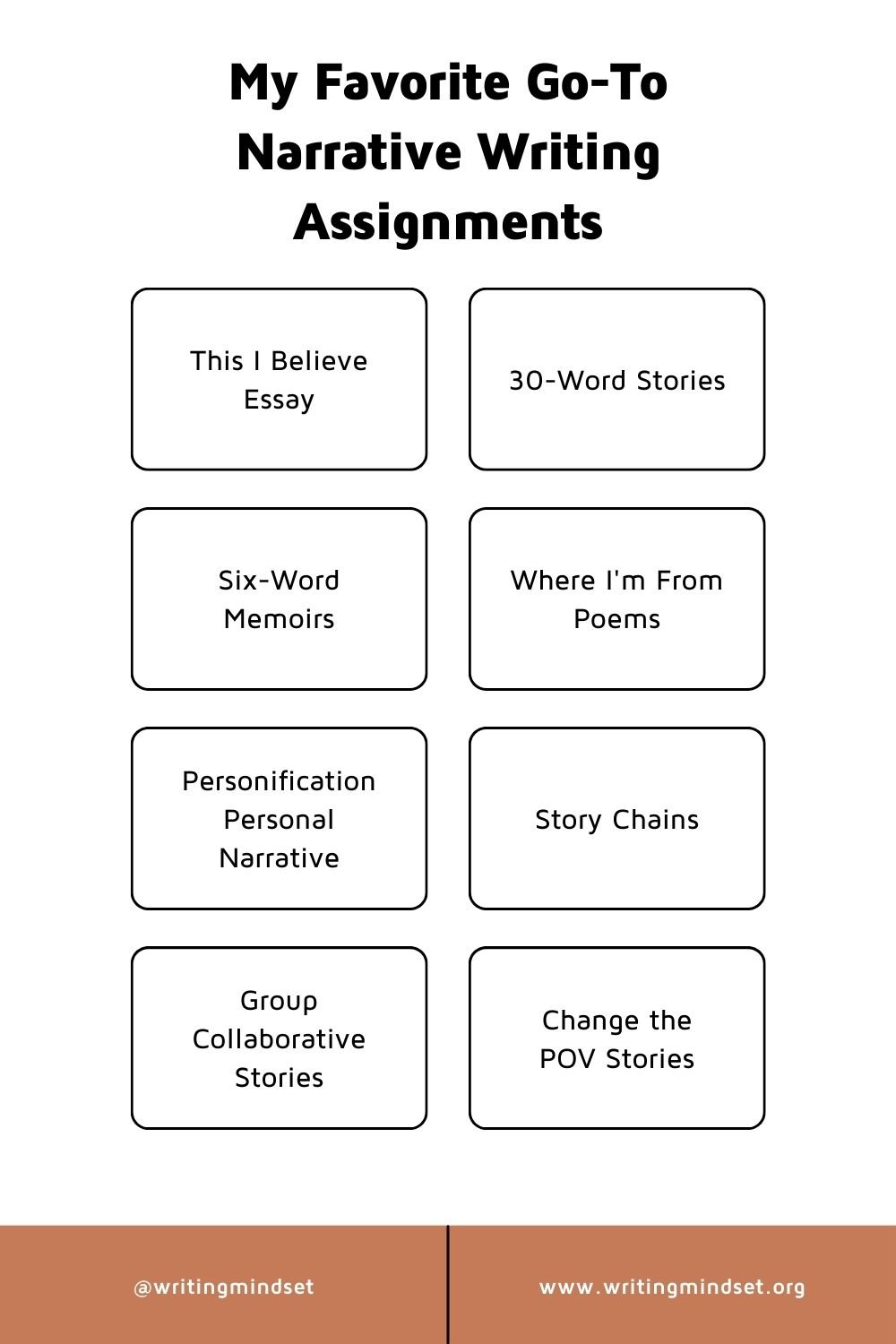Narrative Writing Project Resources You Can Use Now
Brainstorming Guide for Narrative Writing Projects in the Literacy Classroom
GRAB THE PERSONAL NARRATIVE WRITING REFERENCE SHEET HERE
At the heart of the literacy classroom, you find stories. All kinds of stories. Especially in the middle-grade classroom, the personal narrative assignment seems to be the quintessential writing process project and often the first project done with students as a means to get to know who is in our classrooms. This is just one way to do a personal narrative project (out of many). Please take what you need to inspire your own teaching craft, and then tap into all of the amazing stories you have in front of you.
Narrative Writing Project Example Instruction Steps:
What is a personal narrative? What makes a good story?
Review five elements of a story: Plot (3 Act Story), Character, Conflict, Theme, Setting
Decide beforehand what type of narrative to assign. Example types: Descriptive, historical, linear, nonlinear, and the most common: viewpoint
Show mentor papers as examples. Students should see an end goal before they jump into the project to show them that writing is 1.) possible and 2.) directions are clear.
Help students narrow what their story is about to a specific scene or story sequence depending on the prompt.
What is a scene? (Scene= snapshot (description about characters/setting + thoughtshot (character viewpoint or thoughts + dialogue)
Snapshot Lesson: Adding Detail to a Story with Five Ws or Sensory Details
Thoughtshot Lesson: Adding thoughts to the story and reviewing rules of dialogue
Review argumentative essay vocabulary terms.
Students start drafting. A good starting point is to focus on having a beginning, middle, and end to a scene. Students are most comfortable with this concept from elementary school.
Review hooks, leads, or attention grabbers (Whatever you would like to call them). Discuss with students the different ways they can start their stories).
Students insert snapshots into their writing. Snapshots add details about the characters and the setting.
Students insert thoughtshots and dialogue into their writing where needed. They often need a workshop day for rules of dialogue and quotation marks.
Students can revise their introductions and create drafts of their body paragraphs.
Students can create a complete draft of their argumentative paper.
Revise and edit.
Lesson Ideas to Use Now
Example Assignment #1: GO-TO PROMPTS
Give different prompts to get students thinking about their own lives. This resource has 12 straightforward personal narrative prompts that students can choose from for their narrative writing projects.
Example Assignment #2: SCAFFOLDED SENTENCE FRAME PACKET
Use writing frames if students are struggling. Need to scaffold? This is the perfect sentence frame packet for students who need more clarity and some help with getting started writing their narratives.
Example Assignment #3: NARRATIVE NONFICTION GUIDED PACKET AND RESOURCE
Narrative nonfiction assignment/Prompt: What encourages you to not give up? This resource uses The Playbook by Kwame Alexander as a guide for giving rules for life. Kids can walk through all of the steps of the assignment and brainstorm story ideas with partners or small groups.
Example Assignment #4: THIS I BELIEVE ESSAYS
This I Believe Essay. Use the This I Believe radio show and website as inspiration. Students can see example essays and then practice annotating the stories to get ideas.
Example Assignment #5: PERSONIFICATION PERSONAL NARRATIVE
Make a copy of my personification personal narrative assignment! You can use any book that contains figurative language, but I chose The Widow’s Broom by Chris Van Allsburg.
Group Narrative Writing
Story Chains
Story chains come from creative writing groups. This group narrative activity can be set up in 2 ways depending on how large your class happens to be. If you have a smaller group of 10-15 students, you can have one single group that forms a circle. If you have a larger group, you will need to setup smaller groups of 7-10 students at the most. These smaller groups can form their own story chains, and then everyone can share out when it is done.
A story chain works like this:
Set a timer for 2 minutes to start. The directions include beginning a story with either a character or a place. The writer begins the story.
Then, after the time is up, the writers pass their papers to the right or left. The next person adds to the story in their own way.
I would add a minute or so after a couple of passes to give time for reading. The stories can be shared out at the end as a way to build community among your group.
Group Collaborative Stories
Grab the planning document here. One of the best ways to bring a group of students together is to have them help create a whole group story. This will require some organization on your part, but it will really help students see how a story is brainstormed and organized. Bonus: The crazier the better to make it memorable for a group of students.

